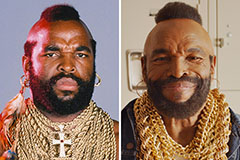Comprehending the Tailoring Process: From Fabric Selection to Final Fitting for the Perfect Closet
The customizing procedure is a complex interaction of art and science, beginning with the essential choice of textile choice and culminating in the precise changes of last fittings. Each material type brings special qualities that influence not just the aesthetic allure but also the garment's longevity and viability for numerous celebrations. Comprehending the nuances of tailoring strategies can raise one's wardrobe to unmatched levels of refinement. As we check out these components additionally, one need to consider exactly how even the tiniest information can dramatically impact the overall result of one's individual design.
Significance of Fabric Option
Choosing the appropriate textile is crucial in the tailoring procedure, as it straight influences the comfort, sturdiness, and overall visual of the final garment. The option of material sets the structure for the garment's performance, functionality, and design. Various materials possess distinct residential properties, such as breathability, stretch, and weight, which can considerably affect exactly how the garment drapes and fits the body.

A tailored item made from an ideal fabric not just showcases craftsmanship however likewise raises the wearer's confidence. Recognizing the subtleties of fabric option is vital for any type of tailoring endeavor. It makes certain that the final item not just satisfies the visual desires of the customer but also aligns with practical needs, therefore achieving an unified balance in between kind and feature in the customized closet.
Sorts Of Fabrics and Their Uses
Recognizing the various kinds of fabrics available is crucial for making notified choices during the tailoring process. Each material has special attributes that determine its viability for details garments and events.
Its versatility enables it to be tailored into everything from tee shirts to gowns. Its all-natural elasticity aids garments keep shape over time.
Silk exudes high-end and is light-weight, making it excellent for eveningwear and delicate blouses; however, it requires careful handling because of its delicacy. Linen, with its textured coating, is a popular option for cozy climates, giving a crisp and airy feel, however it wrinkles conveniently, which might impact the garment's look.
Synthetic textiles, such as polyester and nylon, deal longevity and resistance to creases, making them appropriate for day-to-day wear and energetic garments. Understanding these material kinds and their residential or commercial properties permits for better decision-making, making sure that each customized piece not just fits well but likewise lines up with the intended objective and event.
The Tailoring Methods Clarified
The art of customizing depends on a selection of methods that transform textile right into well-fitted garments. Central to this procedure is pattern composing, where a dressmaker produces templates based on the customer's dimensions and preferred style. This initial step makes certain that see it here the garment will fit the user effectively before any type of reducing takes place.
As soon as patterns are established, reducing methods come into play. Precision is vital as inaccuracies can cause misfitting garments. Tailors typically utilize numerous cutting approaches, such as single-layer cutting for complex layouts and multiple-layer cutting for performance on common patterns.
Basting is another crucial strategy, enabling dressmakers to momentarily stitch textile pieces with each other for an initial fitting (wedding suits perth). This technique uses the opportunity to assess the drape and general shape prior to final stitching
Seaming methods, including flat-felled seams and French seams, enhance the garment's toughness and visual appeal. Tailors likewise employ techniques such as interfacing and padding to offer framework and form to details locations, like collars and shoulders.
Finally, ending up methods, consisting of hemming and edge completing, make certain More Bonuses the garment's durability while providing a sleek look. With each other, these methods form the backbone of reliable customizing, resulting in beautiful, custom-fit clothing.

Fitting Modifications and Considerations
After the initial customizing methods have been used and the garment is created, suitable adjustments come to be critical to attaining the best fit. These modifications attend to numerous facets of the garment, guaranteeing it contours to the wearer's body form and improves total appearance.

The increase of trousers pop over to this web-site is one more crucial element; it should sit pleasantly over the hips without creating discomfort, permitting convenience of movement. Hemming lengths for both pants and skirts ought to show the user's preferred style while respecting proportions.
Furthermore, attention must be provided to the back of the garment, making sure that there are no undesirable pulls or excess material - custom suits perth. Each change needs to be meticulously considered, as also small alterations can significantly affect the general fit and aesthetic of the tailored piece, ultimately resulting in a wardrobe that emanates confidence and sophistication
Keeping Your Tailored Attire
Constantly comply with the treatment tag directions, which may recommend dry cleansing for delicate textiles or equipment washing for even more resilient materials. Stay clear of frequent laundering, as this can put on down the material and change the garment's shape.
Storage is equally vital; usage padded hangers for coats and coats to preserve shoulder framework, and store trousers folded up neatly or hung to stop creasing. Secure garments from direct sunlight, which can fade shades and damages fibers.
In addition, regular inspections for minor repair work can stop larger issues. Look for loosened buttons, tearing seams, or signs of moth damages, resolving these issues promptly to maintain the garment's integrity.
Finally, think about seasonal turning. Wearing customized items in moderation permits materials to recuperate, prolonging their lifespan. By executing these upkeep methods, you can make sure that your tailored garments continue to be as immaculate as the day you initially wore them, improving your excellent closet for several years to find.
Conclusion
The customizing process, including material choice, skilled methods, and specific fitting modifications, plays an essential role in producing garments that improve both comfort and style. Each stage adds to the total effectiveness of the last product, guaranteeing that apparel not just fits well but also shows private identity. Furthermore, comprehending the relevance of maintenance extends the life of customized garments, strengthening their value in a well-curated closet. A comprehensive strategy to tailoring culminates in a sleek and certain appearance.
 Jake Lloyd Then & Now!
Jake Lloyd Then & Now! Mr. T Then & Now!
Mr. T Then & Now! Sam Woods Then & Now!
Sam Woods Then & Now! Batista Then & Now!
Batista Then & Now! Erika Eleniak Then & Now!
Erika Eleniak Then & Now!